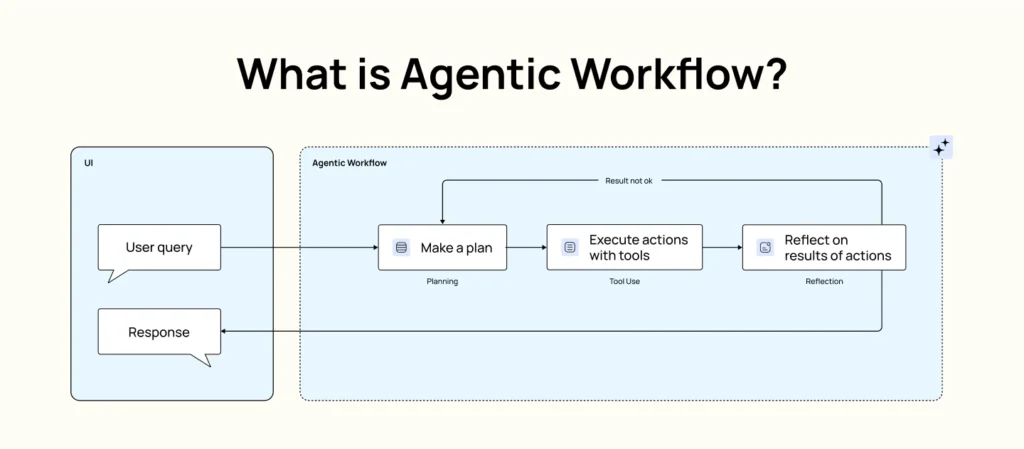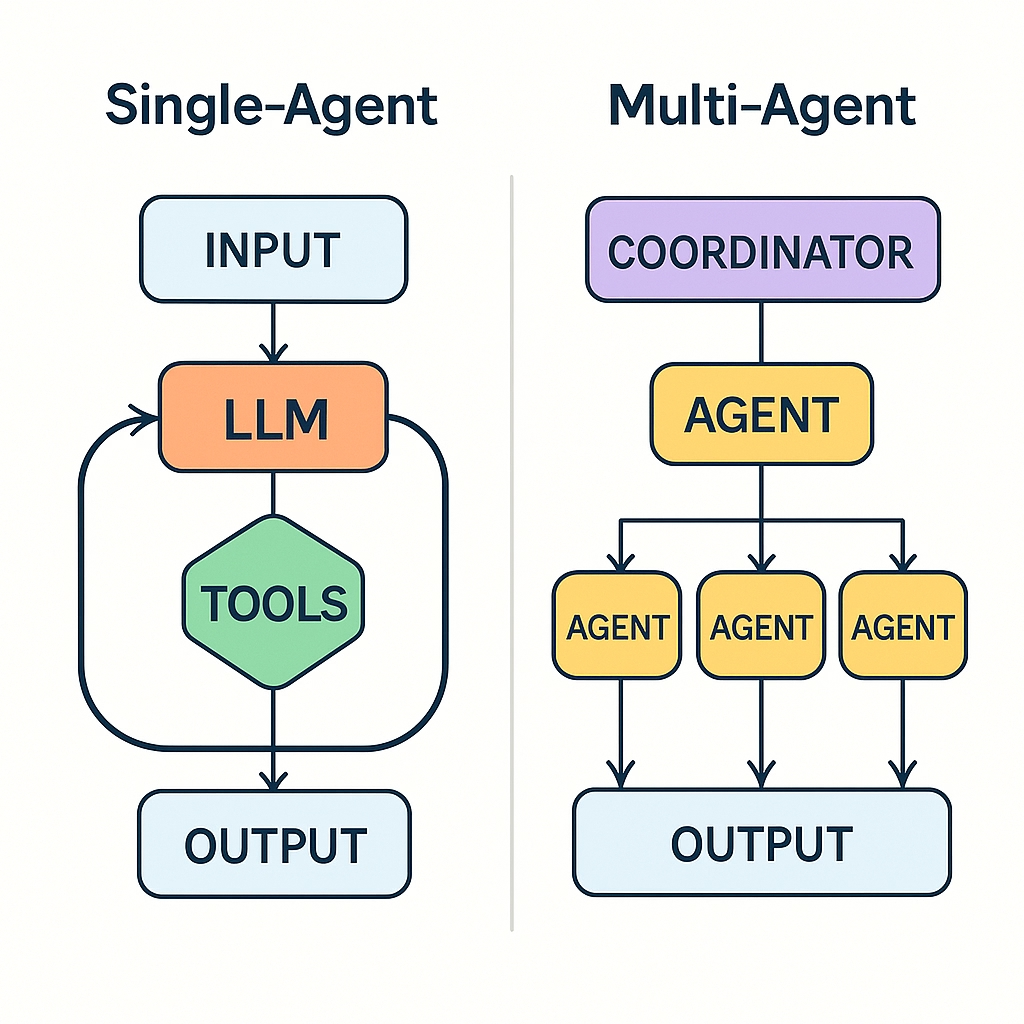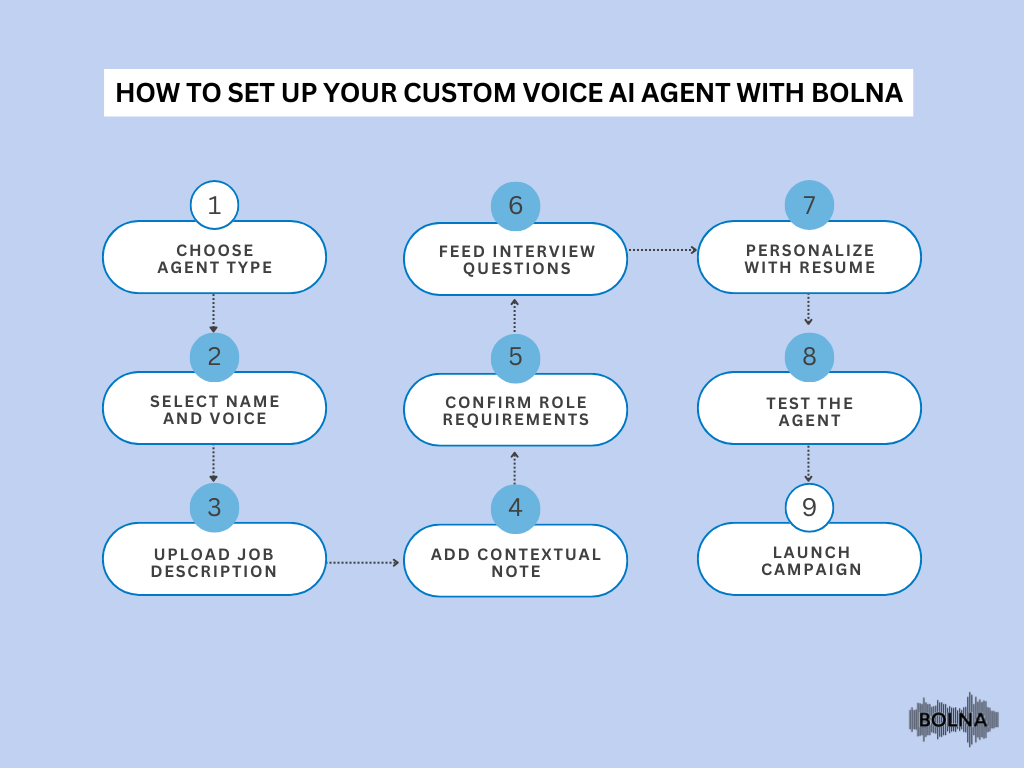Imagine a business that runs smoothly on its own. Tasks are completed without delays, decisions are made instantly, and every system learns and improves with time. This is what agentic workflows make possible. They use intelligent AI agents that can work independently, analyze data, and make decisions without constant human input.
Agentic workflows are the next step in AI business automation. Unlike traditional systems that only follow preset rules, these workflows understand context and adjust their actions in real time. They make operations faster, reduce errors, and help businesses respond quickly to changing needs.
More companies are now using AI agents to simplify operations, improve efficiency, and deliver better results across departments. From customer support to recruitment, these systems are transforming how work gets done.
In this article, we will explore what agentic workflows are, how they work, their key benefits, and how platforms like Bolna are helping businesses use this technology to stay ahead.
Table of Contents
What Are Agentic Workflows?
Agentic workflows are systems powered by AI agents that can perform complex tasks on their own. These agents are trained to understand goals, analyze information, make decisions, and take action without needing continuous human direction. They can manage data, coordinate between tools, and even learn from results to improve over time.
In simple terms, agentic workflows combine intelligence and automation. Instead of following a fixed sequence of steps like traditional systems, they adapt as situations change. For example, a service platform might use agentic workflows to analyze incoming requests, decide which department should handle them, and track progress automatically.
Real-world examples already show their impact. ServiceNow’s Workflow Data Fabric uses this approach to connect data across systems, helping companies like Dish Network cut repair times by over 90%. By learning from outcomes and improving with each cycle, agentic workflows make business operations faster, smarter, and far more efficient.

Key Characteristics of Agentic Workflows
Agentic workflows stand out because they can think, learn, and act on their own. These systems bring intelligence and flexibility to business operations, helping companies handle complex processes with speed and accuracy.
- Autonomy: AI agents can make decisions and act independently once given a goal. They manage tasks from start to finish without constant human input, freeing teams to focus on strategy and creative work.
- Adaptability: These systems can adjust to new data, changes, or unexpected situations. They analyze information in real time and modify their actions to deliver the best possible results.
- Goal Orientation: Each AI agent is programmed to achieve specific outcomes, not just follow preset rules. The focus is always on results and improvement.
- Continuous Learning: Agentic workflows learn from every action they take. They refine their processes, correct mistakes, and get better over time without manual updates.
- Collaboration: Multiple AI agents can communicate and coordinate with one another. This teamwork allows them to handle complex, multi-step operations more effectively.
Together, these characteristics make agentic workflows dynamic, reliable, and capable of transforming how businesses operate.
Agentic Workflows vs. Traditional Workflows
Traditional workflows follow a fixed sequence of steps. Each task depends on the previous one, and even a small change often requires manual updates. These systems work well for simple, repetitive processes but struggle when conditions shift or when multiple decisions need to be made at once.
Agentic workflows, on the other hand, are flexible and intelligent. They can adapt to new data, learn from outcomes, and make context-based decisions in real time. This makes them ideal for modern business environments where speed, accuracy, and adaptability matter most.
| Aspect | Traditional Workflows | Agentic Workflows |
|---|---|---|
| Flexibility | Limited, follows predefined rules | Highly adaptable, handles unexpected scenarios |
| Decision-Making | Based on pre-programmed logic | Dynamic, context-aware decisions |
| Learning Capability | Limited or non-existent | Continuous learning and improvement |
| Complexity Handling | Struggles with multi-faceted tasks | Excels at solving complex problems |
| Human Intervention | Frequent oversight required | Minimal need for human involvement |
The move from traditional to agentic workflows marks a shift from static automation to intelligent operations. Businesses adopting these systems gain faster decision-making, improved accuracy, and a foundation for continuous improvement.
Core Components of Agentic Workflows
Agentic workflows work through a combination of smart components that allow them to understand, decide, act, and improve. Each part plays an important role in helping the system function smoothly and efficiently.
- Perception Module: This part collects and processes data from various sources such as sensors, software, or user input. It helps the system understand what is happening in its environment before taking action.
- Decision-Making Engine: Once data is gathered, this engine analyzes it and decides the best course of action. It uses logic, experience, and real-time information to make accurate and informed choices.
- Action Execution Module: After making a decision, this module carries it out. It might adjust system settings, send notifications, or update records depending on the task.
- Learning and Adaptation Mechanism: This component allows the system to learn from results and improve future performance. It reviews outcomes and adjusts strategies to increase accuracy and efficiency.
- Communication Interface: In systems that use multiple agents, this interface helps them share information and coordinate their work. Effective communication ensures that all parts of the system work together toward the same goal.
These components together make agentic workflows capable of operating independently while continuously improving through experience.
Architectures – Single vs. Multi-Agent Systems
Agentic workflows can operate in different ways depending on how many AI agents are involved and how they interact with each other. The two most common setups are single-agent and multi-agent systems.
In a single-agent system, one AI agent is responsible for managing an entire task or process. It collects data, makes decisions, and takes action within its assigned scope. This approach is simple to build and easy to control, making it a good choice for businesses that want to automate smaller or well-defined tasks such as report generation, data monitoring, or candidate screening.
A multi-agent system brings several agents together to work as a team. Each agent focuses on a specific part of the task for example, one might analyze data while another handles communication or coordination. These agents share information and adapt their actions to achieve a shared goal. This design is better suited for large or complex operations that require multiple systems to collaborate smoothly.
In short, single-agent architectures are best for focused automation, while multi-agent systems unlock higher intelligence, flexibility, and scalability across business operations.

The Role of AI Agents in Agentic Workflow
AI agents are the driving force behind agentic workflows. They act as independent digital workers that can understand tasks, make decisions, and carry them out from start to finish. Each agent has a specific purpose, whether it’s analyzing data, managing communication, or coordinating with other systems.
What makes these agents special is their ability to combine reasoning with action. They don’t just follow orders; they learn from experience. When faced with a new challenge, an AI agent can use past data and patterns to decide what to do next. This makes them valuable in environments that change quickly, where traditional automation often fails.
AI agents also bring teamwork into digital operations. In larger systems, multiple agents share information and work together toward a shared objective. One might handle data collection, another might evaluate options, and a third might execute the final action. This coordination allows organizations to manage complex operations efficiently and with fewer errors.
As businesses adopt these systems, the role of AI agents continues to expand, from handling small, repetitive tasks to managing entire processes that once required full human teams. They represent a major step toward a more intelligent and adaptive future for business operations.
Prompt Engineering in Agentic Workflows
For agentic workflows to work efficiently, AI agents need clear and meaningful instructions. This is where prompt engineering comes in. It is the process of designing precise inputs or questions that guide AI agents to perform tasks correctly. A well-crafted prompt helps the agent understand the context, choose the right action, and deliver accurate results.
In business settings, prompt engineering ensures that AI systems stay aligned with company goals. For example, when an AI agent manages customer service or recruitment tasks, the way instructions are framed determines how effectively it responds to each situation. Prompts that include clear objectives, context, and expectations help reduce errors and improve performance.
This process is not static. Prompts are tested, refined, and improved over time based on how the AI responds. As a result, the workflow becomes smarter and more efficient. By investing in prompt engineering, organizations can make sure their agentic systems deliver consistent, reliable, and high-quality outcomes across different functions.
Agentic Workflows in Recruitment
Recruitment is one of the areas where agentic workflows and voice AI are having a major impact. Traditional hiring involves many repetitive steps, from screening resumes to scheduling interviews. AI agents can now handle these tasks automatically, reducing manual work and helping recruiters focus on understanding people instead of managing paperwork. They also make communication faster and more consistent, improving the overall candidate experience.
With voice AI, these workflows become even more personal. Instead of relying on text, AI agents can speak with candidates, understand tone and intent, and create meaningful interactions that feel more natural. Platforms like Bolna are helping companies adopt this technology with tools that combine automation and conversation. The result is a smarter, faster, and more human way to manage hiring, one that saves time while keeping candidates genuinely engaged.
Why Build Agentic Systems with Bolna
After seeing how agentic workflows transform recruitment, it is clear that the same approach can improve many other areas of business. Companies today need tools that are intelligent, adaptable, and easy to use. Bolna, an Indian voice AI platform, gives businesses the power to build and manage their own AI agents that can handle a variety of tasks independently.
Bolna focuses on making automation more human. Its voice agents can talk naturally with people, understand intent, and respond in real time. They support multiple languages, including English, Hindi, and several Indian regional languages, which helps companies connect with diverse teams and customers. This creates smoother communication and a better experience for both users and employees.

The setup process is simple and intuitive. As shown below, businesses can design a custom Voice AI Agent in just a few steps — from choosing the agent type and uploading a job description to testing and launching it. With its easy workflow and strong integration options, Bolna makes it possible for organizations to bring agentic systems to life quickly and efficiently.
Conclusion
The future of business lies in intelligent systems that can think, learn, and act independently. Agentic workflows are leading this change by turning automation into intelligent action that adapts and improves with every task. They make operations faster, smarter, and more connected.
With the growth of voice AI, these systems now communicate naturally, bringing a human touch to digital processes. Companies that embrace this shift will build stronger, more efficient operations. Bolna, an Indian voice AI platform, is at the center of this transformation. By combining natural conversation with automation, it helps businesses create intelligent workflows that deliver speed, accuracy, and a better experience for everyone.
You can see the platform in action through a live demo, explore the API documentation, or speak directly with our engineers to learn how Bolna can fit into your business needs. You can also schedule a call with our team to discuss your goals and find the right solution for you.
Frequently Asked Questions
What are agentic workflows?
Agentic workflows are intelligent systems powered by AI agents that can make decisions and perform tasks on their own. They help businesses automate operations, improve accuracy, and adapt quickly to changes.
How are agentic workflows different from traditional automation?
Traditional automation follows fixed rules, while agentic workflows learn and adapt. They analyze information in real time and make context-based decisions, allowing companies to handle complex processes with less human effort.
What role does voice AI play in agentic workflows?
Voice AI adds natural communication to automation. It allows AI agents to talk with users, understand tone and intent, and create smoother interactions across recruitment, customer service, and other business areas.